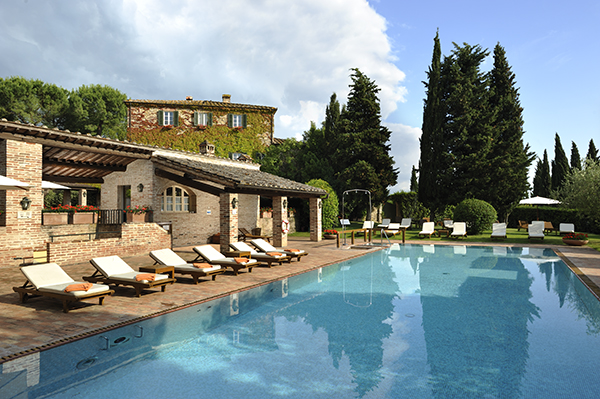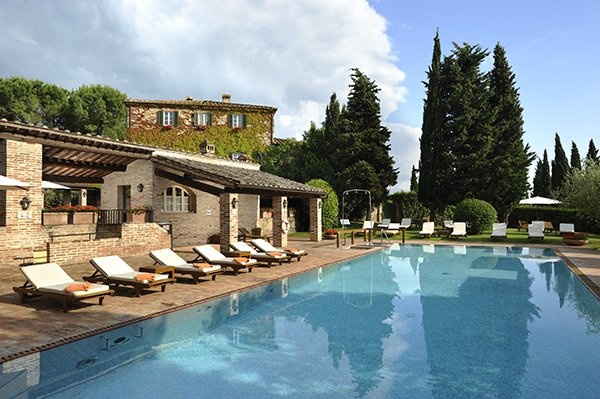 IN THE SLEEPY southeast corner of Tuscany’s Chianti region, otherworldly De Chirico–esque landscapes are probably enough to lure one away from the grandeur of Florence and Rome. But just half an hour northeast of Siena I arrived in an unimaginably sumptuous and perhaps equally surreal place: an entire eighth-century hilltop village, a borgo, rescued, building by building, from the brink of oblivion and turned into a Relais & Chateaux hotel named after the borgo’s patron saint, San Felice.
IN THE SLEEPY southeast corner of Tuscany’s Chianti region, otherworldly De Chirico–esque landscapes are probably enough to lure one away from the grandeur of Florence and Rome. But just half an hour northeast of Siena I arrived in an unimaginably sumptuous and perhaps equally surreal place: an entire eighth-century hilltop village, a borgo, rescued, building by building, from the brink of oblivion and turned into a Relais & Chateaux hotel named after the borgo’s patron saint, San Felice.
I claimed a seat at La Terrazza, one of two restaurants in this former village surrounded, as it always was, by undulating hills and valleys covered with oak and chestnut forests, along with 350 acres of vineyards and olive groves. It could easily be a scene out of California wine country. But the local 2011 Il Grigio Gran Selezione Chianti Classico my young Swiss-Italian server poured, followed by simple, superbly fresh homestyle fare – slow-cooked tomato puree, braised veal cheeks, regional ricotta, black cabbage polenta – were definitely and redolently Tuscan.
It was as if this quaint village, with vestiges of its long history still evidenced by its beautiful buildings and narrow streets — the eighth-century Romanesque San Felice church and de rigueur bell tower; the small stone and brick houses; the open square with three-story palazzo owned for centuries by the noble Del Taja family, along with the 19th-century Capella della Maddalena and mordant 20th-century postwar mural with vaulted winery cave nearby — had never suffered an exodus and cultural lull three decades ago when jobs were scarce. The borgo’s weathered, picturesque stone buildings, including the former butcher shop and the bakery, have been humming with new activity ever since the 1990s, when insurance and fund management company Allianz Group stepped in and resurrected the place as the elite Borgo San Felice.
Each of the 50 rooms are furnished with handmade 19th-century-style Tuscan furniture and sumptuous fabrics picked by Sienese interior designer Maria Chiara Brogioni. From there, the spaces are decorated to match each one’s distinct shape and scale, but shared architectural traits include stone and brick walls, wood-beamed or stone vaulted ceilings, and Italian shuttered windows. Some rooms have patterned fabrics and floral details; others are simpler, more contemporary. All bathrooms feature hand-painted Tuscan tiles.
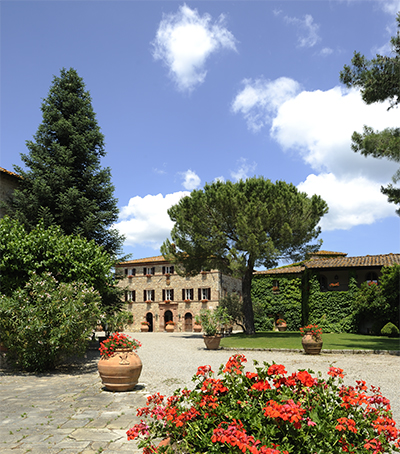 Not a Disneyesque facsimile, it is the real thing, albeit with improvements that make it an upscale yet understated hotel campus whose old-fashioned — though not period perfect — aspects let guests experience the village’s age with ease. Upgraded creature comforts include a new swimming pool beside an old courtyard that is a magnet for alfresco diners in summer.
Not a Disneyesque facsimile, it is the real thing, albeit with improvements that make it an upscale yet understated hotel campus whose old-fashioned — though not period perfect — aspects let guests experience the village’s age with ease. Upgraded creature comforts include a new swimming pool beside an old courtyard that is a magnet for alfresco diners in summer.
In one sense, Borgo San Felice is like a timetravel machine. The imperceptibly restored building exteriors belie the high-tech Wi-Fi and satellite TVs inside, just as gravel streets with old-fashioned signage camouflage modern drains and electrical lines underfoot. Guests can pad about these sanitized historic alleyways in their bathrobes and slippers if they like, then duck into a state-of-the-art Dr. Vranges–scented spa with bells and whistles like modern shower jets, sauna and chromatherapy steam room, all in a building once home to an enormous stone frantoio.
If the ancient borgo supplied the design cues, Allianz’s wine-growing and olive-oil-producing arm, Societa Agricola San Felice — which grows sangiovese nearby, runs an enological lab and makes brunellos in nearby Montalcino with traditional Tuscan techniques — did not have to go far for viticultural pointers either.
Thousand-year-old fortified Brolio Castle — partially reconstructed in the 19th century as a redbrick neo-Gothic fantasy — is just an hour’s hike uphill or a short bike ride from the borgo. It belonged to the Ricasoli family, who dabbled in expansionist wars between Siena and Florence for centuries before one Baron Bettino Ricasoli encouraged political detente in the mid-1800s and laid the groundwork for developing Chianti Classico wine instead. He was the first nobleman in the region to introduce the kind of crop rotation and viticulture Agricola San Felice now espouses routinely to make wines like the one my Swiss-Italian server poured me.
San Felice’s signature restaurant, run by Michelin-starred Franceso Bracali, is Poggio Rosso, named for one of Agricola San Felice’s best-known labels. Regional ingredients such as pink chickpeas from Regello, shallots from Certaldo, saffron from San Gimignano, sheep milk cheese from Crete Senese and San Felice’s own olive oil and estate-grown herbs are 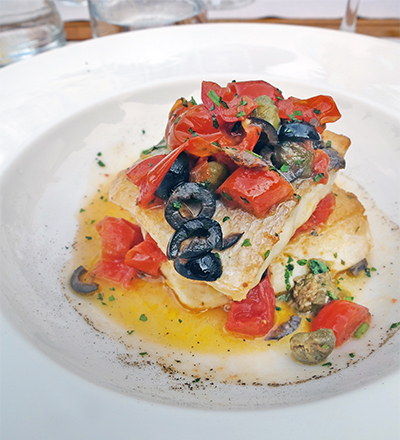 combined in Bracali’s raviolis and garganelli pasta.
combined in Bracali’s raviolis and garganelli pasta.
“His personalized style of cooking may be one of the principal reasons people often decide to get married at San Felice,” declares suave San Felice hotel and resort general manager Danilo Guerrini, a year-round resident and an apostle of Italian felicity. “They get married in the church or the chapel on the square; they can house nearly 150 guests in the village and celebrate and dance in the main square under the stars.
“Luxury today means not just wonderful furniture and nice cars or great service,” he says, but “to host people as if they are part of a big family. In our village, we do that.”
View more photos in the gallery below.
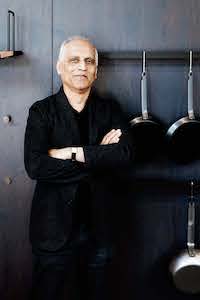
Zahid Sardar brings an extensive range of design interests and keen knowledge of Bay Area design culture to SPACES magazine. He is a San Francisco editor, curator and author specializing in global architecture, interiors, landscape and industrial design. His work has appeared in numerous design publications as well as the San Francisco Chronicle for which he served as an influential design editor for 22 years. Sardar serves on the San Francisco Decorator Showcase design advisory board.

